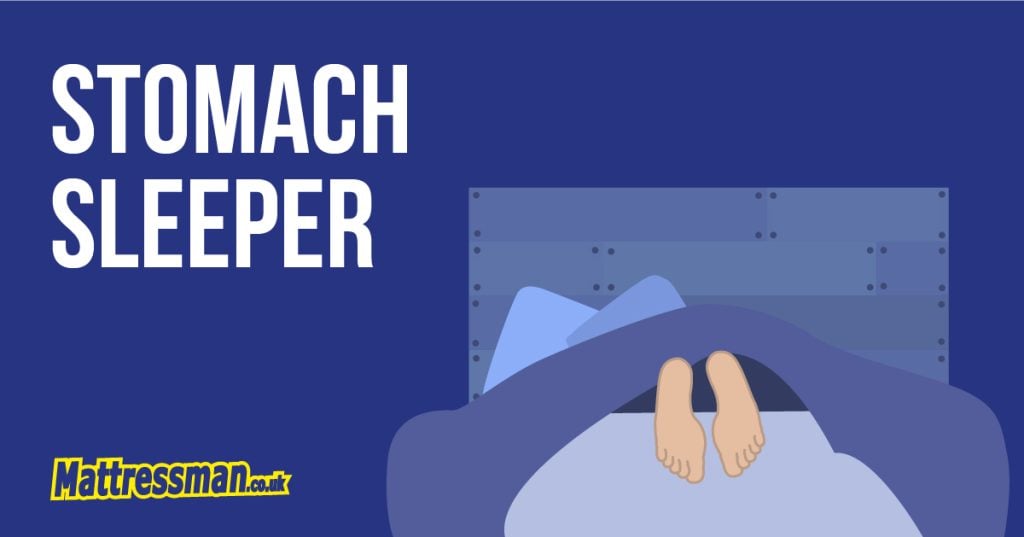Do you find yourself waking up with inexplicable aches and pains all over your body despite getting 8 hours of rest? You’re not alone.
When we sleep, our bodies toss and turn to find comfort. It’s something that we have no say in, which can make it difficult to control.
If these seemingly random, continuous pains are a problem, it could be from your sleeping posture. Not only does our posture impact us on the day-to-day, but it also comes into play at night time.
So, what is the healthiest sleeping position, and which ones should you avoid? Let’s find out.
Before we get into sleeping positions, it helps to understand the differences between a good and bad posture.
You measure good posture by the curvature of the spine and contortion of our muscles. A curved spine puts increased pressure on our lower limbs, which results in a slouched resting position with a hunched back.
Fixes include:
- making a conscious decision to straighten the back.
- buying ergonomic furniture that caters to our body.
- arranging everyday items in an accessible manner to avoid unnecessary stretching.
The same rules can be applied during our sleep. While our bodies are always trying to get comfortable throughout the night, they may do so with unnatural resting positions, which over time can cause irreparable damage to the spine.
With all of this said, how do we correct our bedtime postures? Let’s go back to basics.
It all starts before we go to sleep. Imagine you’re watching TV lying down on the sofa with your neck tilted. It’s something you do every night, and it’s never caused you problems before, right?
Wrong.
Situations like this are usually the very beginnings of bad sleeping posture. While it may be comfortable, this certainly isn’t the most ergonomic practice, so it’s time to make some changes before bedtime.
Start by sitting up straight with your feet firmly planted on the floor. If your feet don’t reach the floor, try stacking some pillows underneath to give them a place to rest. Now, without trying to make any adjustments, see what position your body naturally relaxes in.
By now, you will have noticed that it is nowhere near the standards of good posture. However, this does give a good reference point to work from.
Now, straighten your body up and place cushions behind your back until it rests into a rough ‘S’ shape. In this position, your spine is at its most optimum curvature, while the rest of your body supports itself. After this, straighten your neck by looking directly ahead. Then, rest your arms on top of your thighs, with your palms facing downward. Congratulations, you’ve found your optimal seating position!
After a short while, your body will want to move out of this position. This is natural, as our muscles can begin to feel stiff and lock up if kept in one place for too long. These same rules can be applied to our sleeping posture, and thankfully, there are a few positions to help you get started.
Now that you’ve cracked the pre-bedtime posture, it’s time to analyse sleeping positions.
There are three main sleeping positions for good posture:
One of the main benefits of sleeping on the back is that the spine can be kept at a constant, aligned position. It also has the added benefit of evenly distributing weight, further preventing any unnecessary pressure on the back. For these reasons, back sleeping is widely regarded as being the best position to sleep for back pain.
However, because of the way our neck and chin lay in this position, back sleeping has been shown to worsen the effects of sleep apnoea.
Read more: Battling Back Pain Change Your Sleep Position
Side sleeping is rather self-explanatory. By resting either the left or right side of your body on your mattress, the respiratory system is greatly supported which can reduce the effects of snoring. Side sleeping also supports the natural curvature in the spine.
The main criticisms of side sleeping are that it increases pressure on our shoulders. After a whole night’s sleep, this can cause a dull ache or feelings of numbness in the morning.

As the complete opposite to back sleeping, stomach sleeping is perhaps the worst sleeping position possible. Stomach sleeping essentially goes against all of the positives of back sleeping, causing a misaligned spine and neck, and introducing increased pressure on our internal organs.
For these reasons, we highly recommend you avoid back sleeping at all costs. Some pressure-sensitive mattresses such as pocket sprung mattresses may reduce the harsh effects of stomach sleeping, but as a precautionary measure, it’s better to try other sleeping positions instead.
Overall, we see side sleeping as being one of the healthiest sleeping positions. It allows our spine to fully relax, circumvents breathing issues by opening airways, and even avoids acid reflux problems by relieving pressure on internal organs.
Is your sleeping position suffering? It could be time to make some changes. At Mattressman, we stock thousands of comfy mattresses and bed frames, all of which are sure to encourage better, healthier sleep.